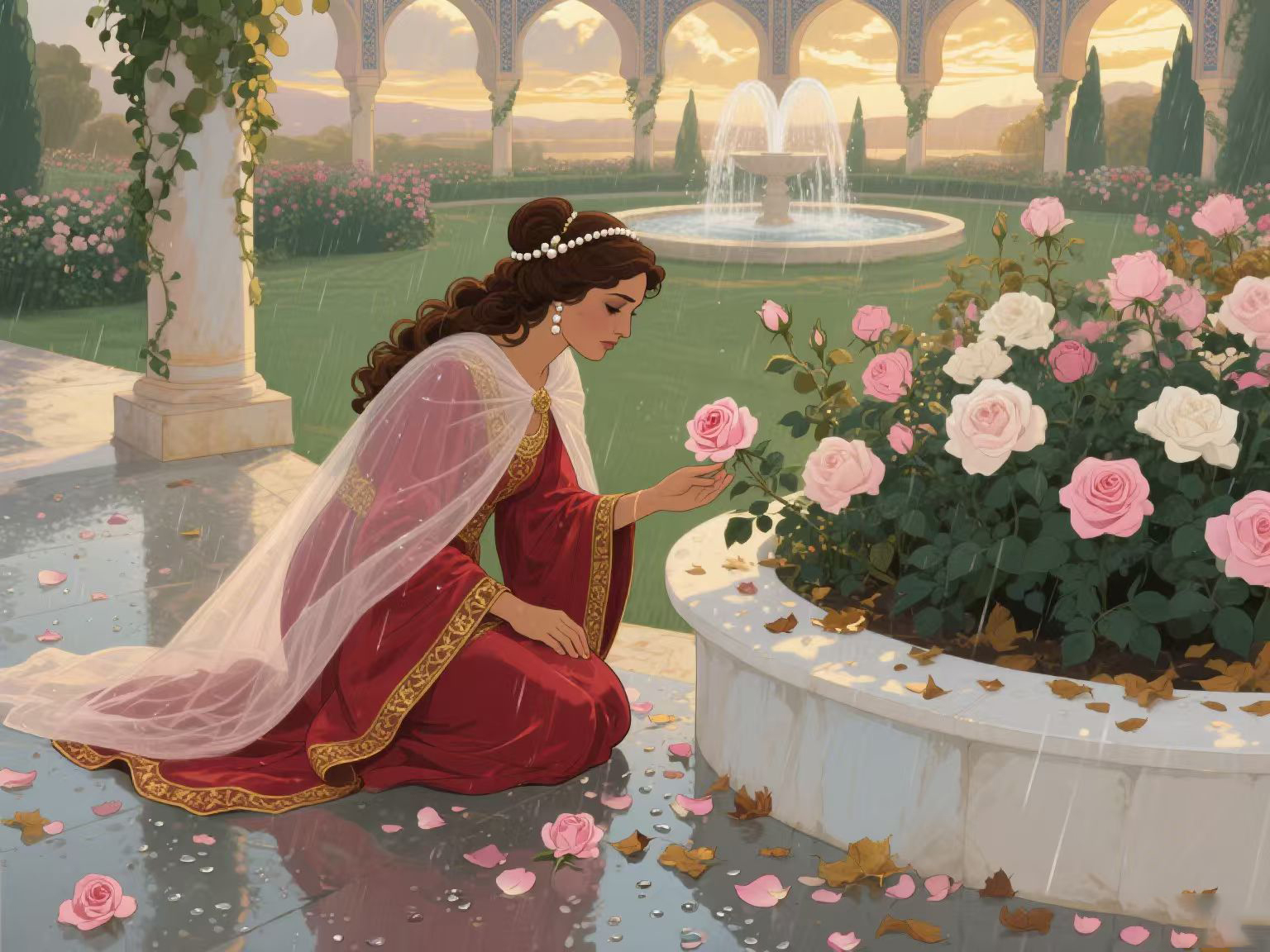+86-13516938893
Menu
global purchase

In the time of the Sasanian Empire of ancient Persia, Queen Nafisa, the wife of King Shapur I, cherished the roses in the royal palace gardens above all else. She would often say, "The fragrance of roses holds the tenderness of sunlight and earth—far more nourishing to the soul than any jewel." Yet in those days, roses had a fleeting bloom; a single autumn rain would scatter their petals, and the queen would often sigh as she gazed upon the withered bushes.
Gafar, the royal physician, noticed the queen’s sorrow and set out on a journey to find a solution. He had heard tales of a century-old "rose mother plant" in the Kashan Oasis of southern Iran—one whose petals, when fallen, would condense into glistening rose dew beneath the moonlight. Traversing deserts and mountain ranges, Gafar spent three months searching before finally locating the rose deep within the oasis: its branches were as thick and gnarled as ancient vines, its petals a soft pink, and its fragrance drifted across the entire oasis with every breeze.
When Gafar asked the elder guarding the rose for some dew, the elder replied, "This dew is the rose’s very soul, and it can only be exchanged for a 'sincere vow.' If you seek it merely to please the queen, the dew will vanish the moment it touches your hand." After a long silence, Gafar knelt and said, "I vow to spend my entire life teaching the people to make rose dew and use it for skincare—so that this gentle fragrance may belong not only to the royal palace, but also to every ordinary woman, protecting and nourishing their skin."
Moved by his words, the elder took a clay bowl and collected the dew that had formed under the moonlight. Gafar returned to the palace with the dew, and when the queen applied it to her skin, she found her complexion growing softer and more delicate—even the fine lines she had once fretted over faded. What was more miraculous: when she watered the palace roses with this dew, their bloom lasted three times longer; even in late autumn, new buds continued to blossom.
Before long, however, a neighboring kingdom invaded. King Shapur I led his army to battle, and Queen Nafisa volunteered to remain behind to comfort the wounded. She mixed the rose dew into medicinal ointments and applied it to the soldiers’ wounds—alleviating their pain and speeding up healing. The people, too, followed the queen’s example: using the method Gafar had taught them, they made their own rose dew, which soothed the chapped hands of the elderly and the flushed cheeks of children alike, all wrapped in that gentle fragrance.
After the war ended, the queen fell gravely ill from overexertion. On her deathbed, she handed her last vial of rose dew to Gafar and whispered, "Let the tenderness of roses remain forever on the soil of Iran." With tears in his eyes, Gafar nodded. He mixed a lock of the queen’s hair with seeds from the rose mother plant and planted them in the Kashan Oasis.
The following spring, new rose bushes sprouted from the earth—their petals more vibrant than ever, their dew richer and more fragrant. The people said that the queen’s soul had merged with the roses: every Iranian rose was the queen guarding this land, and every drop of rose dew was her vow to "let tenderness shine upon all." To this day, the roses of Kashan are still known as "Nafisa’s Kiss," and the tradition of Iranian rose skincare endures as a gentle legacy spanning a thousand years.